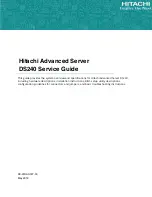
High-performance blade server optimized for virtualization
Please see the Legal Information section for important notices and information.
14.
factors, such as voltage and thermal conditions—even if the server has failed.
Other systems management features offered for the combination of blade server and chassis
include:
•
Predictive Failure Analysis for system processors, memory and HDDs, as well as chassis switch
modules, blower modules and power modules
•
Web-based out-of-band control
•
Latest OS failure screen capture
•
Remote virtual media
•
High-speed remote redirection of PCI video, keyboard and mouse
•
SSL (Secure Socket Layer) and LDAP (Lightweight Directory Access Protocol) support
In order to put control of processor power-saving features at the fingertips of administrators, IBM
developed
IBM
Systems Director Active Energy Manager
. Active Energy Manager is designed to
take advantage of new processor features, such as balancing the performance of the system
according to available power input. It provides the ability to plan and predict power consumption
based on your BladeCenter hardware configuration. It also helps you reduce the infrastructure
required for redundancy, by using fewer servers on smaller power feeds and potentially lowering
your overall data center support costs. It does this by inventorying all components at the blade
level, then adding up the power draw for each blade and tracking that usage. In failure mode,
Active Energy Manager (through the BladeCenter Management Module) might request that certain
blades in each domain throttle down to reduce power consumption.
IBM
ToolsCenter
consolidates 42 needed tools for managing servers individually into an
integrated suite of 8 tools. They are organized by function: deployment, updates, configuration
and diagnostics. Tools are now simpler to access and use with a single webpage for access, a
common look and feel and a common command line interface for the scripting tools. The
ToolsCenter
Bootable Media Creator
offers significantly more functionality than past tools with
the ability to add more tools to the bootable image and to automatically download the bootable
environment if needed. Bootable Media Creator allows you to create bootable CDs, DVD, and
USB keys for updates customized to your systems.
Automatic Server Restart
(ASR) helps reduce downtime by restarting the server automatically
in the event of a system lockup. ASR technology is a combination of hardware circuitry tied into
the server’s system reset function and a device driver. As long as the server continues running,
the ASR watchdog timer will keep being reset, but if the operating system crashes or the
hardware freezes somehow the ASR software will be unable to reset the hardware timer. If the
timer is not reset within five minutes, it automatically triggers the ASR hardware, which
immediately restarts the server (and logs an ASR event with IBM Systems Director). These
features are designed so that
no more than five minutes can pass before the server is restarted
.
Text and Graphics Console Redirect
support allows the administrator to remotely view HS22V
text and graphics messages over serial or LAN.
Wake on LAN
permits the server to be remotely powered on if it has been shut off. Once
powered up, the server can be controlled across the network, using the
Preboot Execution
Environment
(PXE).
Like Wake on LAN,
PXE
is system firmware. It allows software such as the
IBM Remote
Deployment Manager
to take control of a system before the BIOS, operating system or
applications are loaded (using Wake on LAN/PXE) and lets an administrator perform many low-
level tasks remotely that would otherwise require a visit to each system. These tasks may include
such things as formatting a hard disk drive, updating system firmware, or deploying a Windows
or Linux operating system.
Predictive Failure Analysis
(PFA)
enables the AMM and the IMM to detect impending failure of
supported components (processors; memory; expansion cards; switch, blower and power
supplies; and hard disk drives) before actual failure, and alert the administrator through IBM
Systems Director. This gives you the ability to replace the failing component
before
it fails,
resulting in increased uptime.
Embedded Dynamic System Analysis (DSA) feature
collects and analyzes system information
to aid in diagnosing problems. The diagnostic programs collect the following information:
•
System configuration
•
Network interfaces and settings
•
Installed hardware
•
Service processor status and configuration
•
Vital product data, firmware, and BIOS configuration
•
Hard disk drive health
•
RAID controller configuration
•
Event logs for ServeRAID controllers and service processors








































